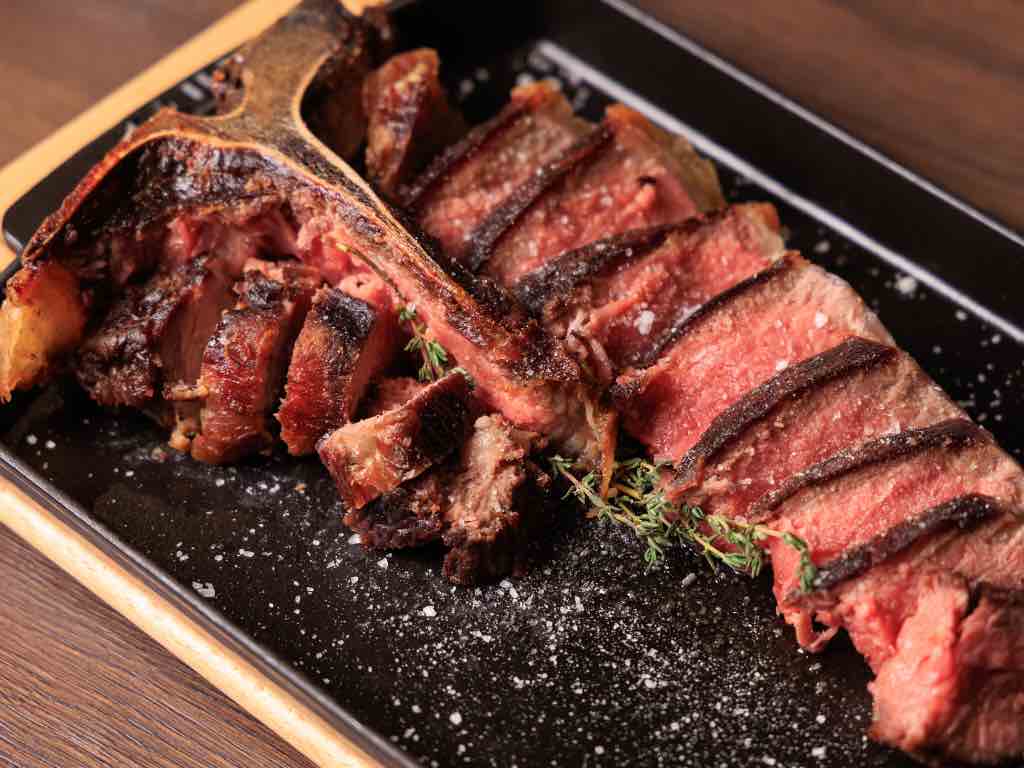
T-Bone Steak Bone Explained: What Makes This Cut So Special?
|
|
Time to read 4 min
Welcome to One Stop Halal!
Written by: Najma A.
|
|
Time to read 4 min
When it comes to premium cuts of beef, few evoke as much excitement and appetite as the T-bone steak. Instantly recognizable by the distinctive T-shaped bone at its center, this cut isn't just a feast for the palate—it's a lesson in meat anatomy and culinary craftsmanship. But what exactly is the T-bone steak bone, and why is it so revered among steak aficionados? In this blog, we'll take a deep dive into what makes this bone special, explore its anatomy, learn how it influences flavor and cooking, and how to get the most out of every juicy bite.
At first glance, the T-bone steak is easy to identify. The cut features a prominent T-shaped lumbar vertebra, with two different cuts of beef on either side:
The bone that runs through the center of the steak is the lumbar vertebrae, part of the cow's short loin section. It plays a key role in giving the steak its iconic look, structure, and taste.
The bone at the heart of this cut is more than just decoration—it is central to the steak's texture, cooking behavior, and flavor distribution. Let's break down its structure:
The vertical bar of the T is the vertebral bone, and the horizontal top is part of the transverse process. This shape is what separates the tenderloin from the strip steak, effectively giving you two steaks in one.
T-bone steaks are cut from the short loin, found just behind the ribs and in front of the sirloin. This area sees tiny movement, making it incredibly tender.
Though often confused with a porterhouse, the difference lies in the size of the tenderloin. Porterhouse steaks are cut farther back on the loin, which includes a larger portion of tenderloin. The bone, however, remains the same structure.
Many steak lovers argue that bone-in steaks taste better than boneless ones. There are a few reasons why the T-bone's bone is more than just aesthetic:
Bones contain marrow, which is rich in fat and flavor. During cooking, this marrow can subtly infuse the meat, especially when slow-cooked or grilled, leading to a deeper, beefier taste.
Bones act as a natural barrier, helping the meat retain moisture during cooking. This can make a T-bone juicier compared to boneless alternatives.
The bone helps the meat keep its shape and prevents it from shrinking unevenly when exposed to high heat.
Cooking a T-bone steak presents a unique challenge: the two sides cook at different rates. The tenderloin side cooks faster than the strip steak side due to its lower fat content and finer grain.
Create two heat zones on your grill—one hot for searing and one cooler for finishing the cook. Sear the steak on the hot side, then move it to the cooler side with the tenderloin portion farther from the heat source.
Start by searing the T-bone in a cast-iron pan to get a good crust, then finish it in the oven at a lower temperature to cook evenly.
Always rest your T-bone for at least 5–10 minutes after cooking. This allows the juices to redistribute throughout the meat, resulting in a juicier steak.
Here’s a simple method to grill a T-bone to medium-rare perfection:
If you want to serve your T-bone steak like a pro:
A 3.5 oz (100g) serving of T-bone steak (grilled, lean only) contains approximately:
Because it’s a red meat cut with marbling, it should be eaten in moderation—but when you do, it’s a satisfying source of essential nutrients and complete protein.
Welcome to Butcher Shop that is 1-clik away. We carry various meat cuts that are hard to find elsewhere. We deliver to your doorstep anywhere in the United States within 1-2 business days.
The T bone steak bone is more than a culinary landmark—it’s the backbone (literally and figuratively) of a legendary cut. Whether you’re grilling it over open flames, pan-searing it indoors, or carving it tableside, the T-bone delivers a two-in-one steak experience that few other cuts can match. The bone adds flavor, tradition, and character to every bite. So the next time you pick up a T-bone, take a moment to appreciate the anatomy, the cooking technique, and the sheer joy of this beefy marvel.

© 2025 One Stop Halal, Inc.